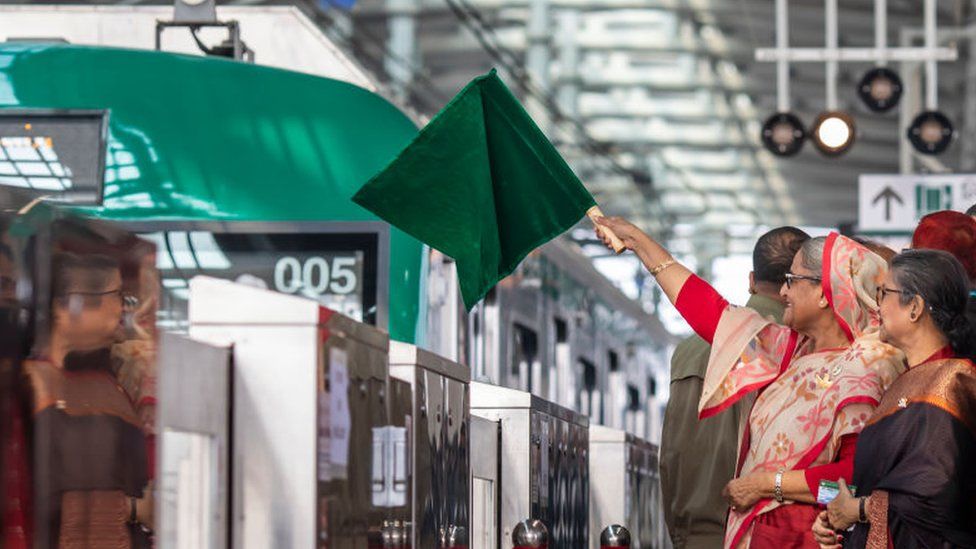Bangladesh: Densely-populated Dhaka gets first metro line
- Published

Some commuters in Bangladesh's capital, Dhaka, now have an easier route to work after the first phase of a long-awaited metro system finally opened.
The car-clogged roads infuriate locals in one of the world's most densely-populated cities, where more than 20 million people live.
On Wednesday Bangladeshi Prime Minister Sheikh Hasina described the new railway as a "matter of pride".
One carriage on every train would be reserved for women, Ms Hasina said.
The operator of the first train was a female driver, Mariam Afiza, who described driving it as a dream come true.
The first metro line, Line 6, took around six years to build. It was largely funded by Japan, a major development partner of Bangladesh.
At first, the service will run around 12km (eight miles) from Uttara to Agargaon without stopping at any stations, but the service will expand.
The new metro line is expected to transport around 60,000 people an hour.
Ms Hasina said the eventual six lines and more than 100 stations would help eradicate traffic jams, which are estimated to cost the Dhaka economy around $3bn a year in lost work time.
Mostafizur Rahman, who spends almost three hours on the bus to get to work every morning told the AFP news agency he was "counting on" the metro line to "reduce public suffering".
At the opening ceremony, Ms Hasina also commemorated six Japanese engineers who worked on the rail line and were killed during an attack on a Dhaka café by Islamist extremists in 2016.
Related Topics
- Published26 October 2020
- Published30 June 2017
- Published20 December 2022